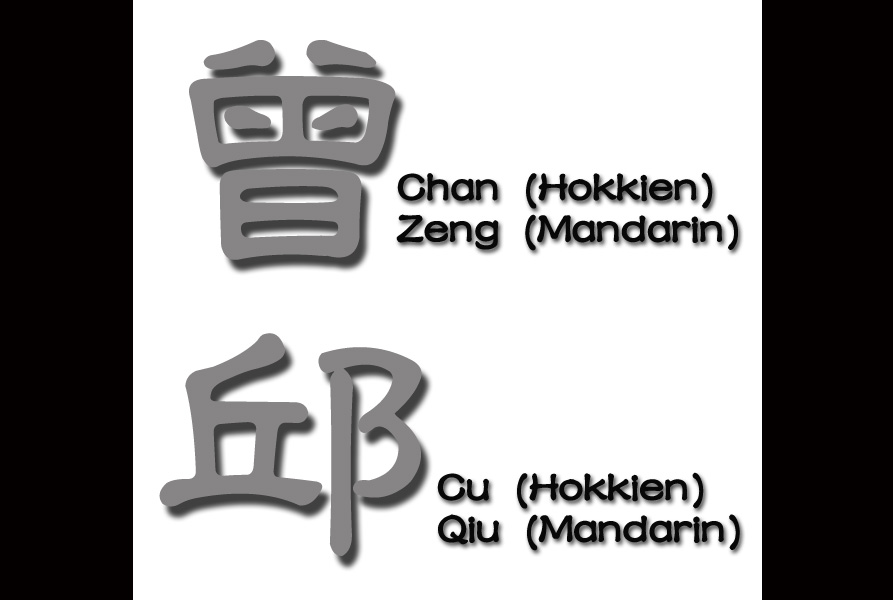First published in Tulay Fortnightly, Chinese-Filipino Digest 23, no. 20 (March 22-April 4, 2011 Tulay Fortnightly): 5-6.
Various family associations in the Philippine Chinese community represent more than one surname. Yet, only one of them truly represents two surnames where clan members actually descended from a common ancestor: Chan (曾) and Cu (邱). This is particularly so if these clan members are from a certain county, 新安 (Xin An) in Xiamen, Fujian province, in China. Other Chinese of these two surnames actually originated from two different places and ancestor.
曾 (Chan in Hokkien, Zeng in Mandarin) originated from Qu Lie (曲烈), son of the sixth emperor of Xia (夏) Dynasty (2000-1500 BC) Shao Kang (少康). The son was granted title and territory at a place in Shandong (山東) province and established a state called Zeng (鄫).
Unfortunately, in 567 BC, it was destroyed by another state and Prince Wu (巫), then the ruler of 鄫, escaped to State Lu (魯), also in Shandong province, and started to use the name of his old state (鄫) as his surname. He modified the character by removing the right portion (阝) to make a new surname (曾).
On the other hand, the surname 邱 (Cu in Hokkien, Qiu in Mandarin) was started by Mu Gong (穆公), third son of Jiang Tai Gong (姜太公), military counselor of Emperor Zhou Wu Wang (周武王, 11th century BC).
He was actually the one who built the State Qi (齊) in Yin Qiu (營丘) , Shandong province, a territory granted by Zhou Wu Wang to his father. He got his surname from the second character of 營丘, thus a new surname 丘was born.
During the reign of Emperor Yong Zheng (雍正, 1723-1735) of Qing (清) Dynasty, there was a taboo against the same character of the first name of the foremost sage of China, Confucius, whose name is Kong Qiu (孔丘).
So, the emperor ordered those using the surname 丘 to add a radical (阝) to its right. Thus, a new surname came about, as well as a new Chinese character, 邱, with the same pronunciation.
It might be purely coincidence. But around 1,000 years ago, these two surnames 曾 and 邱 merged together in Xin An in Fujian province and became one common origin of people there with surname 曾 and 邱. Note that the right radical of 鄫 – 阝, which connotes ear – was dropped and instead attached to 丘 to make it 邱. No wonder these two surnames were close to one another.
How did these two unrelated surnames come together in Xin An and join into one clan?
It is said that Zeng Ming (曾明) – the 14th generation grandson of Zeng Liang (曾亮) of Song (宋) Dynasty (960-1279) – went to Xin An in Fujian and stayed with a Cu (邱) family. And since Zeng Ming was still single and the Cu family only had a daughter but no son, the two married and Zeng Ming stayed on with the family.
Their children and heirs were given the choice of using either of the two surnames. Thus, from this marriage in Xin An, the Chan and Cu surnames in the Philippines form a common family association.
